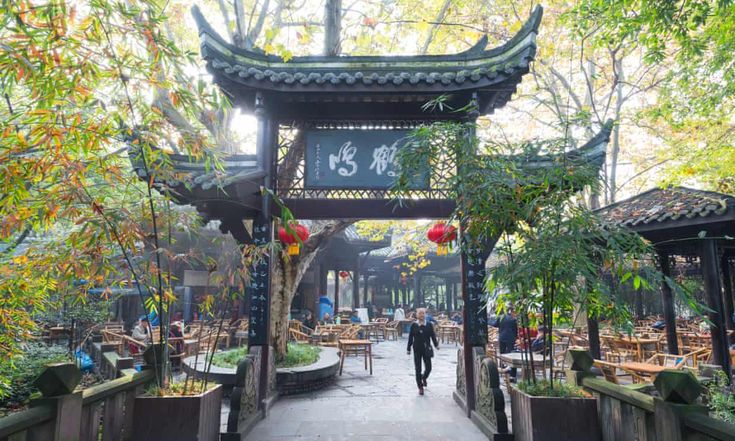Table of Contents
In the vast, wind-swept heights of the Tibetan Plateau, a quiet but strategic transformation is underway. What appears on the surface as development roads, dams, and digital networks is, in reality, part of a sweeping geopolitical strategy by China to extend its control, influence, and coercion well beyond its borders. While global attention is often focused on overt conflicts or trade wars, China’s actions in Tibet represent a more subtle and dangerous form of statecraft known as gray-zone strategy. This strategy utilizes infrastructure not merely to build economies but to reshape borders, suppress dissent, and extend influence over neighboring countries, such as India and Nepal. It’s a form of power that operates below the threshold of conventional warfare but is no less effective in changing the balance of power.

Infrastructure as a Tool of Coercion
Historically, infrastructure has symbolized development and cooperation. However, China has redefined it as a tool of geopolitical coercion. Under President Xi Jinping, infrastructure projects, especially in border regions like Tibet, are being built with dual-use capabilities, serving both civilian and military purposes. Through its Western Development Plan (WDP) and the broader Belt and Road Initiative (BRI), China is embedding roads, railways, hydropower dams, and digital surveillance into Tibet. These are not neutral assets. They serve as latent instruments of compellence, giving Beijing leverage without requiring open conflict. As such, China’s infrastructure on the Tibetan Plateau is a key element in what scholars and strategists call “weaponized interdependence,” using shared systems to exert dominance and control.

Water as Leverage: Dams on the Plateau
The Tibetan Plateau is the source of most major rivers in South and Southeast Asia, including the Brahmaputra, Mekong, Salween, and Yangtze. These rivers are lifelines for billions of people downstream. China’s extensive dam-building along these rivers gives it significant control over water flows that other nations rely on for agriculture, drinking water, and power generation. For example, the construction of dams along the Yarlung Tsangpo (Brahmaputra) raises serious concerns for India and Bangladesh. In the Mekong region, China’s upstream dams have already disrupted water flow, reduced fish stocks, and increased seasonal droughts in countries like Thailand, Cambodia, and Vietnam. China’s strategy isn’t just about energy; it’s about power. These dams can be used to manipulate river flows during political disputes, subtly but effectively coercing countries to align with Beijing’s interests.

Villages as Political Tools: Changing the Facts on the Ground
Along the disputed Line of Actual Control (LAC) with India, China has launched a campaign of building “xiaokang” (well-off) border villages. These settlements, while framed as development initiatives, have a strategic purpose: to change territorial realities without confrontation. With government incentives, Chinese citizens settle in these remote villages, supported by roads, bridges, and security outposts. When challenged, Beijing claims these areas are “inhabited Chinese territories,” shifting the border one small step at a time in a strategy known as salami slicing. One notable case is the Pangong Tso Lake area in Ladakh, where China built a bridge that can support military vehicles. While it technically facilitates civilian movement, it also creates the possibility of rapid PLA deployment in case of a border conflict. The line between civilian and military use is intentionally blurred.

Railroads and Roads: Strategic Military Mobilization
Tibet’s vast railway and highway network has grown exponentially since the 1990s. China’s goal is not just to connect Tibet with the rest of the country but to ensure it can rapidly mobilize military forces if needed. The Qinghai-Tibet Railway and the newer Lhasa-Nyingchi line are now critical arteries for moving both goods and troops. Satellite imagery shows PLA units conducting exercises and deploying equipment along these corridors, particularly near hotspots like Arunachal Pradesh and Sikkim. These transportation networks allow the PLA to outpace Indian forces in terms of logistics and response time, an increasingly critical factor in the unpredictable terrain of the Himalayas.

Digital Surveillance: Exporting Authoritarianism
Perhaps the most insidious component of China’s strategy is its digital infrastructure, particularly its use of Huawei technology to monitor, suppress, and control populations both inside and outside China. In Nepal, where thousands of Tibetan refugees live, Chinese surveillance systems have been used to track and intimidate dissidents. Huawei, the dominant telecom provider in Nepal, has embedded itself deep into the country’s digital backbone, reportedly working with local officials to monitor online activity, phone calls, and physical movements. Cases have emerged of Tibetans in exile being contacted by family under duress, warning them not to return home. Others have noticed increased scrutiny or intimidation after criticizing China online. What China sells as “smart city” solutions often serves as tools of state repression, reaching far beyond its borders into the digital lives of foreign nationals.

Strategic Responses: What Should the World Do?
China’s infrastructure strategy in Tibet is not just a regional issue; it’s a global challenge. The coercive potential of these developments threatens the sovereignty of neighbors and sets a precedent for authoritarian expansion under the guise of development.
To counter this, the report recommends:
1. Strengthening Regional Partnerships
- Promote India-Nepal cooperation to reduce reliance on Chinese infrastructure.
- Use U.S. agencies like the DFC, MCC, and USTDA to finance alternative infrastructure in the region.
2. Defending Digital Sovereignty
- Encourage adoption of open, secure, and transparent digital ecosystems.
- Provide alternatives to Huawei and develop cybersecurity protocols in partnership with allies.
3. Enhancing Intelligence and Early Warning
- Expand intelligence-sharing agreements like BECA to include Nepal.
- Monitor PLA movements, digital threats, and disinformation campaigns through joint surveillance efforts.

Conclusion: From Infrastructure to Influence
The roads, dams, and digital systems sprouting across the Tibetan Plateau are not just tools of development; they are tools of domination. China’s gray-zone strategy is sophisticated, calculated, and increasingly effective. It allows the CCP to shift borders, suppress dissent, and influence foreign governments all without firing a shot. To preserve sovereignty, freedom, and regional stability, nations must stop viewing infrastructure as neutral and start seeing it for what it can be: a vehicle for coercion. The only way to counter this rising tide is through strategic partnerships, digital resilience, and shared vigilance. The world cannot afford to be passive while authoritarian influence is paving one road, dam, and data center at a time.
Author Profile

- Li Li, associate professor and master’s supervisor at Southwest University. B.A. in English for Education from Southwest Normal University, M.A. in English Translation and Interpretation from China Foreign Affairs University, Ph. D. in Japanese Cultural History from Nankai University (all above are in China). Also has studied at Osaka Sangyo University and Kokugakuin University in Japan and been a Fulbright visiting scholar to Western Kentucky University in US. A multidisciplinary and versatile instructor with a trilingual mastery of Chinese, English and Japanese, known for Combining foreign language teaching with history and humanity cultivation. Academic researches center on Japanese history, international relations and Western culture studies. Work experiences include teaching at Capital Normal University, Chongqing Normal University, and Southwest University. Has published multiple academic papers, translated works, authored or co-edited several textbooks and monographs; provided language services for several high-level and high-profile international events.
Latest entries
 PoliticsSeptember 7, 2025Japan’s Prime Minister Shigeru Ishiba Resigns Amid Election Defeats:What’s Next for Japan?
PoliticsSeptember 7, 2025Japan’s Prime Minister Shigeru Ishiba Resigns Amid Election Defeats:What’s Next for Japan? GeopoliticsAugust 22, 2025The Limits of Russia’s Friendship: Moscow’s Calculated Response to the Iran Crisis
GeopoliticsAugust 22, 2025The Limits of Russia’s Friendship: Moscow’s Calculated Response to the Iran Crisis Japanese PoliticsJuly 22, 2025Japan’s Upper House Election: Prolonged Instability and Its Impact on Domestic and Foreign Policy
Japanese PoliticsJuly 22, 2025Japan’s Upper House Election: Prolonged Instability and Its Impact on Domestic and Foreign Policy Middle East AffairsJuly 20, 2025Will Israel Ever Face Consequences for Bombing Its Neighbours?
Middle East AffairsJuly 20, 2025Will Israel Ever Face Consequences for Bombing Its Neighbours?

